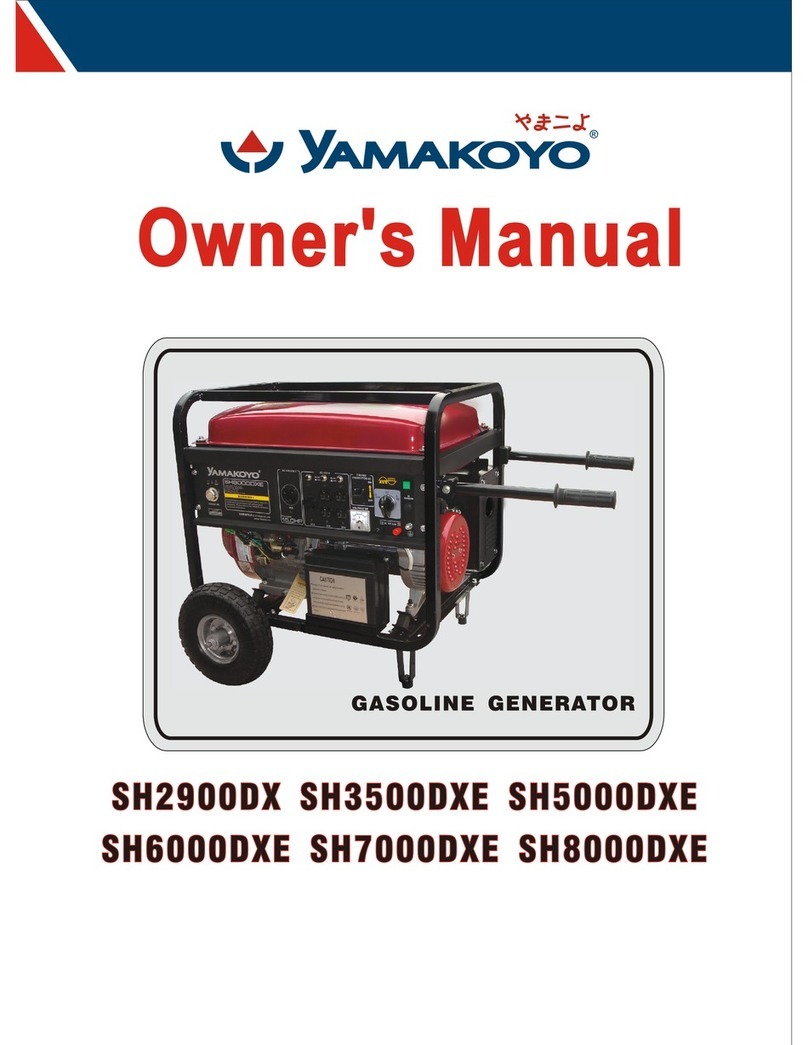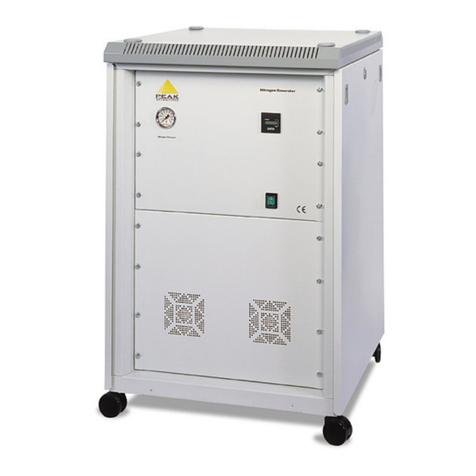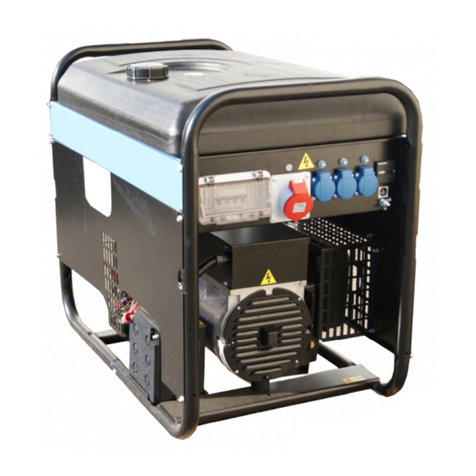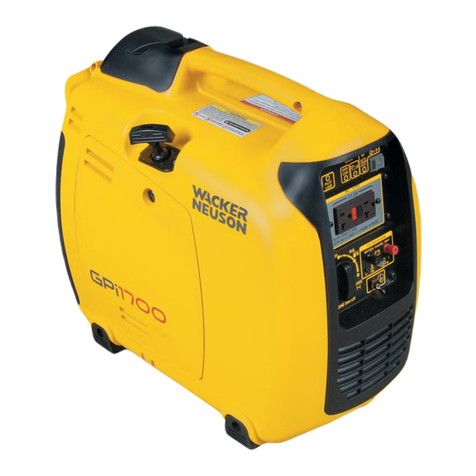Harrison Hydra-Gen Quick start guide

Harrison Hydra-Gen
®
Hydraulic Driven AC Generator System
Operation and Installation Guide
For Harrison Hydra-Gen Model(s):
15.0 NCM – 16F
20.0 NCM – 16F
(01-31- 013) - Spec. B
For technical assistance contact:
Harrison Hydra-Gen, Ltd.
14 33 West Rd.
Houston, Texas 77041
( 81) 807-44 0 Ph.
(800) 7 3-3334 Toll
( 81) 807-4815 Fax
www.harrisonhydragen.com

ii
ARRANTY REGISTRATION CARD
Keep top section for your permanent records.
DATE OF PURCHASE
GENERATOR MODEL
SERIAL NUMBER
PUMP MODEL NUMBER
SERIAL NUMBER
HERE PURCHASED
ADDRESS
CITY, STATE, ZIP
IMPORTANT: A completed warranty registration card (form no. WR-1 below) is required
for the fulfillment of any warranty service. Please return this section immediately to
ensure your service is not denied or delayed pending proof of purchase information
verification.
WARRANTY REGISTRATION CARD
FORM NO. R-1
COMPANY NAME: _______________________________________________________________
ADDRESS: ________________________________________________________________________
CITY: ____________________________________ STATE: _________________ ZIP: _________
CONTACT: _______________________________ PHONE NO.: ___________________________
GENERATOR MODEL NO.: SERIAL NO.: ___________________________
PUMP MODEL NO.: ________________________ SERIAL NO.: ___________________________
HERE PURCHASED: ______________________________________________________________

iii
Place
Stamp
Here
Harrison Hydra-Gen, Ltd
14233 est Rd.
Houston, TX 77041
Please cut card along
dotted line, fold, and secure
with tape before mailing.
FOLD HERE
CUT HERE

iv
TABLE OF CONTENTS
arranty Registration Card ....................................................................................................... ii
Table of Contents....................................................................................................................... iv
Table of Figures ...........................................................................................................................v
Safety Precautions ......................................................................................................................1
General Safety .....................................................................................................................................1
Electrical Shock ...................................................................................................................................1
Moving Parts .........................................................................................................................................
Hydraulic Fluid Under Pressure ...........................................................................................................
Clean Unit And Surrounding Area .....................................................................................................
Introduction .................................................................................................................................3
About this Manual ...............................................................................................................................3
Parts & Service .....................................................................................................................................3
System Overview .................................................................................................................................3
Generator Ordering Code .........................................................................................................4
Hydraulic Pump Ordering Code ...............................................................................................5
Specifications .............................................................................................................................6
Unit Dimensions And Weights ............................................................................................................6
Alternator Detail ..................................................................................................................................6
Hydraulic System .................................................................................................................................6
Drive Motor ...........................................................................................................................................6
Pump Requirements ............................................................................................................................6
Dimension Drawings ............................................................................................................................7
Hydraulic Pump Information ..............................................................................................................8
80CC KA ASAKI PUMP ..............................................................................................................8
Installation Guide .......................................................................................................................9
Installation Cleanliness ........................................................................................................................9
Hydraulic Oil Requirements ................................................................................................................9
Hydraulic Pump Mounting .............................................................................................................. 10
Fretting ....................................................................................................................................... 10
PUMP Mounting Locations ...................................................................................................... 11
Soft Start Wiring ......................................................................................................................... 1
Key Points .................................................................................................................................. 1
Generator Tray Mounting and Airflow........................................................................................... 13
Hydraulic Reservoir Mounting ......................................................................................................... 14
Hydraulic Connections .................................................................................................................... 14
Hose Specifications .................................................................................................................. 14
Key Points .................................................................................................................................. 15
Plumbing DiagramS ......................................................................................................................... 16
Hydraulic Circuit Diagram ............................................................................................................... 17
Display Meter Mounting .................................................................................................................. 18
Electrical Connections..................................................................................................................... 19
Operator’s Guide ......................................................................................................................21
Before Starting .................................................................................................................................. 1
Fill and Bleed Sequence .................................................................................................................. 1
Frequency Adjustment ....................................................................................................................
Normal Operation ............................................................................................................................ 3
Meter Display Module ...................................................................................................................... 3

v
Maintenance ............................................................................................................................24
Appendix...................................................................................................................................25
Manufacturer’s Limited Warranty .................................................................................................. 5
Accessories ........................................................................................................................................ 6
Generator Display & Meter Kit ........................................................................................................ 7
Oil resrvior filter assembly ................................................................................................................. 8
TABLE OF FIGURES
Figure 1: Generator Tray Dimension Drawing ..........................................................................................7
Figure : Reservoir Dimension Drawing .....................................................................................................7
Figure 3: 80cc Kawasaki Pump ..................................................................................................................8
Figure 4: Air Gun Projectile Cleaner ..........................................................................................................9
Figure 5: Hydraulic Fluid Selection Graph ................................................................................................9
Figure 6: Pump Mounting L-Bracket Front View .................................................................................... 11
Figure 7: Pump Mounting L-Bracket Rear View .................................................................................... 11
Figure 8: Pump Case Drain Orientation ................................................................................................. 1
Figure 9: Good Generator Airflow Installation ...................................................................................... 13
Figure 10: NCM Plumbing Diagram ........................................................................................................ 16
Figure 11: Hydraulic Circuit Diagram ..................................................................................................... 17
Figure 1 : Meter Display Cutout Dimensions ......................................................................................... 18
Figure 13: Meter Display ........................................................................................................................... 18
Figure 14: Summary of Electrical Connections ..................................................................................... 19
Figure 15: Electrical Circuit Diagram ...................................................................................................... 0
Figure 16: Example of Hydraulic Fluid Reservoir .................................................................................... 1
Figure 17: Kawasaki Pump Control .........................................................................................................
Figure 18: Meter Display Module ............................................................................................................ 3

1
SAFETY PRECAUTIONS
ARNING!
THIS SYMBOL ARNS OF IMMEDIATE
HAZARDS OR UNSAFE PRACTICES HICH ILL
RESULT IN SEVERE PERSONAL INJURY OR
DEATH.
CAUTION!
THIS SYMBOL REFERS TO A HAZARD OR
UNSAFE PRACTICE, HICH CAN RESULT IN
PERSONAL INJURY OR PRODUCT OR
PROPERTY DAMAGE.
ARNING!
DO NOT OPERATE THE GENERATOR IF THE
VEHICLE HAS BEEN DRIVEN THROUGH HIGH
ATER OR SUSPECTED ATER HAS ENTERED
THE GENERATOR.
ARNING!
DO NOT SET OPERATING FREQUENCY ABOVE
63 HZ. THE GENERATOR AND ELECTRICAL
EQUIPEMENTS CAN BE SEVERELY DAMAGED IF
OPERATING FREQIUENCY IS SET ABOVE 63 HZ.
ARNING!
ITH THE NE 2007 EMISSIONS, ENGINE
EXHAUSTS ARE OPERATING HOTTER. IF OIL
COMES IN CONTACT ITH THE EXHAUST, A
FIRE COULD OCCUR.
GENERAL SAFETY
•Electrical equipment and moving parts present
potential hazards that may result in serious
personal injury. Take care in following these
recommended procedures.
•Do not work on this equipment when mentally or
physically fatigued.
•Always wear safety glasses.
ELECTRICAL SHOCK
•Disengage power before moving protective
shields or touching electrical equipment.
•Use rubber insulating mats placed on dry wood
platforms over floors that are metal or concrete.
•Do not wear damp clothing (including wet shoes)
or allow skin surfaces to be damp when handling
electrical equipment.
•Jewelry is a good conductor of electricity and
therefore should be removed when working on
electrical equipment.
•Use extreme caution when working on electrical
components. High voltages cause injury or
death.
•Generator installation and operation must comply
with all applicable local, state, and federal codes
and regulations.
•Have all electrical installations performed by a
qualified licensed electrician.

MOVING PARTS
•Avoid moving parts when working on the unit.
•Do not wear loose clothing when working around
rotating components.
•Make sure all the nuts and bolts are secure.
•Keep power shields and guards in position.
•If adjustments must be made while the unit is
running, use extreme caution around rotating
and/or hot components.
HYDRAULIC FLUID UNDER PRESSURE
•Hydraulic fluid can penetrate the skin, which can
result in possible blood poisoning.
•Always shut down the primary engine driving the
hydraulic pump before loosening or tightening
any fittings.
CLEAN UNIT AND SURROUNDING AREA
•Keep the unit and surrounding area clean.
•Remove all accumulated grease and oil from the
unit. Do not store anything in the generator
compartment. Both can cause generator system
problems (overheating, noise, and vibration),
eventual generator damage, and/or potential fire
hazards.

3
INTRODUCTION
ABOUT THIS MANUAL
This manual covers the specifications, installation,
operation, and maintenance of your Harrison Hydra-
Gen hydraulic generator.
PARTS & SERVICE
To obtain parts or service, please have your model
and serial number ready and contact us toll free at
1-800-723-3334. Outside of the United States, please
call 1-281-807-4420. You can also reach us via fax at
1-281-807-4815. Our office hours are Monday
through Friday between 8:00 AM and 5:00 PM
Central Standard Time.
Alternately, you may access product information
online at www.harrisonhydragen.com and obtain
support via customerservice@harrisonhydragen.com.
SYSTEM OVERVIE
Harrison Hydra-Gen hydraulic generators are
comprised of several components. A general
hydraulic and electrical component overview for our
generator is described below.
•Hydraulic Pump: The hydraulic pump sends
hydraulic fluid (oil) to the motor at a constant
flow under varying engine speeds.
•Motor: The hydraulic motor drives the
alternator.
•Alternator: An AC brushless revolving field
alternator provides regulated 120/240 VAC.
•Heat Exchanger: When the oil leaves the motor
it is cooled in an oil-to-air heat exchanger before
it is returned to the reservoir.
•Hydraulic Reservoir: The hydraulic oil
reservoir is equipped with an oil filter, oil level
sight glass, oil temperature gauge, oil filter and
breather cap.
•Display: The generator is also equipped with a
FRC meter which displays output voltage,
frequency, current, oil temperature, and unit
running time.

4
GENERATOR ORDERING CODE

5
HYDRAULIC PUMP ORDERING CODE

6
SPECIFICATIONS
UNIT DIMENSIONS AND EIGHTS
TRAY 15.0KW 20.0KW RESERVOIR
Height
18.63" 18.63" 13.9"
Width
16.15" 16.15" 19"
Length
43.38" 43.38" 9.3"
Weight
350 lbs 384 lbs
Max KW
15 20
Amps @ 120V
125 167
Amps @ 240V
63 84
ower Required
34 HP 44 HP
Max System
ressure
3900 PSI 4600 PSI
ALTERNATOR DETAIL
Design: Brushless revolving field, four pole, and 1800 rpm for 60-hertz operation.
Rating: See nameplate for individual unit rating.
Regulation: ± 1% Voltage regulation from nameplate rating.
Waveform: Harmonic distortion is limited to just 4%.
Insulation: Class H, 200°C, Slot Insulation, Varnish, Additional Marine Coating.
Power Factor, Pf: 1.0 (unity) for single phase units, 0.8 for three phase units.
HYDRAULIC SYSTEM
Type of oil: Use only premium hydraulic fluid with anti wear, anti foam, and anti rust additives.
Optimum operating viscosity is 80-170 SUS. Viscosity should never exceed 4,600 SUS at
the coldest startup temperature, and should never be less than 60 SUS at 180°F.
Capacity: The reservoir should contain a minimum of 5.0 gallons (U.S.) of hydraulic oil.
DRIVE MOTOR
Type: Bent-axis piston motor
Displacement: 30 CC
Max. Pressure: 5800 psi
Case Drain: External
Rotation: Bi-Directional
PUMP REQUIREMENTS
Flow: 15.0 GPM
Pressure: 3900 psi

7
DIMENSION DRA INGS
Figure 1: Generator Tray Dimension Drawing
Figure 2: Reservoir Dimension Drawing

8
HYDRAULIC PUMP INFORMATION
80CC KAWASAKI PUMP
Min / Max Shaft Speed 900 / 3000 rpm †
Displacement 80 CC
Min / Max Temperature -4 / 204° F
Pump Weight 78 lbs
Maximum Input Torque 295 ft. lbs
Pump Shaft SAE “C” Spline or Keyed
Maximum Pressure 5200PSI
Rotation CW or CCW
Maximum Vacuum 10.0 in. Hg.
† Note: Consult Harrison Hydra-Gen factory for pump speeds above 3000 rpm.
Figure 3: 80cc Kawasaki Pump

9
INSTALLATION GUIDE
The hydraulic generator system must be installed
properly to operate reliably, quietly, and most
importantly, safely. Read the entire manual and
option instructions before installation.
INSTALLATION CLEANLINESS
CAUTION!
MAINTAIN OIL CLEANLINESS DURING
INSTALLATION. DEBRIS IN A HYDRAULIC
SYSTEM MAY DAMAGE INTERNAL
COMPONENTS OR CAUSE THE PUMP
COMPENSATOR TO STICK, RESULTING IN
ERRATIC OPERATION.
•Ensure the work area is free of dirt and always
keep ports plugged until hoses are installed.
•Filter oil through a 10 micron (or better) absolute
filter before using it in the generator. Even a new
barrel of oil can contain contamination that is
harmful to a hydraulic system.
•Thoroughly flush hoses before connecting. It is
best to clean your hoses using an air gun like the
one shown below. See the Accessories page in
the Appendix for more information.
Figure 4: Air Gun Projectile Cleaner
HYDRAULIC OIL REQUIREMENTS
Harrison Hydra-Gen, Ltd. recommends a premium
anti wear hydraulic oil to be used in the generator
system. Dextron III does not fall in this category.
Dextron is formulated to operate in transmissions.
The weight of the oil is determined by the climate the
system is operating in. Using an AW46 will provide
good protection in most year round US climate
conditions.
A graph of ISO Oil Grades versus applicable fluid
temperatures is shown below. The lowest allowed
cold start temperature (at 4600 SUS) for each grade is
shown as a triangle. The bar represents the ideal
viscosity range for that fluid (80-170 SUS). The
diamond at the top signifies the upper temperature
limit of the fluid (at 60 SUS). Do not exceed this
limit for a prolonged time period.
Hydraulic Fluid Grade vs. Fluid Temperature
-50
0
50
100
150
200
250
VG 100 VG 68 VG 46 VG 32 VG 22
ISO Oil Grade
Fluid Temperature (°F)
▲
Co ld Start Temperature (4600 SUS)
█Optimum Range (80-170 SUS)
♦
♦♦
♦
M aximum Temperature, Sho rt Term (60 SUS)
Figure 5: Hydraulic Fluid Selection Graph
The operating temperature of the fluid in the
hydraulic generator system is maintained at 120°F to
180°F, depending on the ambient air temperature and
load. Fluids with a viscosity rating of less than 60
SUS at this temperature are not acceptable. For cold

10
climates, the oil must not have a rating higher than
4600 SUS. Conditions that allow the fluid to drop in
temperature causing the viscosity to be higher than
930 SUS will require warm up procedures before
using the system. If there is some uncertainty about
the oil that you are using, consult with the
manufacturer or distributor of the oil.
Every oil mfg. offer oils that meet the needs of
hydraulic systems. An example of good oil is Mobile
DTE-25 or equivalent.
HYDRAULIC PUMP MOUNTING
CAUTION!
FRETTING OCCURS HEN A MALE SPLINE
SHAFT IS INSTALLED INTO A FEMALE SPLINE
AND THE TEETH BECOME ORN OVER TIME.
BEFORE INSTALLING THE PUMP INTO THE PTO,
GREASE THE SPLINES ITH AN APPROVED
SPLINE LUBRICANT.
FRETTING
During installation, ensure grease is applied to all the
teeth and teeth roots of both the PTO and pump. Fill
the valleys of the spline roots of both PTO and pump
shaft. This allows extra lubricant to carry through the
spline contact area by centrifugal force. While it can
significantly prolong spline life, this procedure
cannot guarantee to completely eliminate excessive
wear. Chelsea supplies a packet of this grease with
every PTO they sell and it is also available in a
grease gun tube. For more information, see the
Accessories page in the Appendix.
Maintaining this area requires removing the pump
from the PTO, cleaning the splines of the old grease,
drying the cleaner, reapplying new lube and re-
installing the pump. This is not easy to do and is very
time intensive. Some Chelsea PTOs, such as the
constant mesh series, have the option to install grease
fitting which allows grease to be pumped into this
area without removing the pump. Consult your PTO
manufacturer for availability. We strongly suggest
this option for constantly engaged PTOs since it
greatly reduces maintenance time.
MAINTENANCE CONSIDERATIONS
Even the best lubricant is eventually pushed out of
the connection area by centrifugal force, temperature,
and vibration. The time frame for maintenance
depends on many operational and environmental
factors, so a fixed time schedule is not practical.
When the lubricating film is lost it must be
replenished. Consult your PTO manufacturer for
more information.
Shaft fretting is not a failure of the generator, pump
or PTO. Fretting conditions are a result of torsion
vibration generated by the engine. This vibration is
transmitted through the transmission and PTO. Since
the pump is the last member in the chain, the spline
areas of the PTO and pump suffer the effect. This
condition occurs primarily at low engine idle speeds.
To avoid this condition and prolong shaft life, keep it
well lubricated. Since this condition occurs at engine
idle, you may consider using a hot shift PTO instead
of a constant PTO. With a constant PTO, the pump is
always on when the engine is on. This subjects the
pump and other components to unnecessary wear.
Also, consider operating the generator at a high
engine idle.
We understand that every application is different and
is driven by your needs. If you require generator
power at low engine idle and operation with a
constant PTO, our generator will provide many years
of reliable power if the maintenance requirements are
met.

11
PUMP MOUNTING LOCATIONS
Pump mounting varies with each application and
pump used. Mounting options include mounting
directly to the PTO or to the transmission. Ensure
you are using the correct PTO ratio so the pump
operates at the correct rpm.
CAUTION!
FAILURE TO PROPERLY ISOLATE THE PUMP
FROM THE CHASSIS MAY RESULT IN
UN ANTED NOISE AND/OR DAMAGE TO THE
PUMP SHAFT.
PTO DIRECT MOUNTING
When mounting the pump directly to the PTO you
MUST lubricate the pump and PTO splines. Failure
to do this will cause premature spline failure
(fretting).
Most PTOs limit the weight on the flange to 40 lbs.
Most of our pumps weigh more than this limit. To
avoid damage to the PTO, secure the rear of the
pump to the vehicle’s transmission case with a
triangle brace. While the brace must not exceed 1/8”
thick under the pump bolt, the remainder of the
bracket should be sufficiently thick to support the
pump. Torque the pump bolt and the transmission
case bolts as specified in the transmission service
manual.
TRANSMISSION MOUNTING
Before mounting the pump to the transmission,
obtain approval from the manufacturer. Verify the
extra weight does not exceed the recommended stress
on the transmission. In most cases, a pump-mounting
bracket can be built to fasten to the bolt pattern off
the rear of the transmission.
In some cases there is no room for a direct mount and
the pump will need to be mounted onto the chassis
using an “L” bracket such as the one in the figures b7
and 8. When driving the pump via drive shaft, design
the “L” bracket with consideration of pump
harmonics and the usage of vibration isolators.
Figure 6: Pump Mounting L-Bracket Front View
Figure 7: Pump Mounting L-Bracket Rear View
It is important to follow good driveline installation
practices:
•Maintain drive shaft angularity within 5-8°.
•Maintain phase relationship between end
yokes.
•Allow slip movement in shaft make up.
•Ensure shafts are parallel within 1.5°.
Proper installation techniques for the drive shaft,
PTO, clutches, or other mechanical means of driving
the hydraulic pump must be followed. Consult the
factory or authorized distributor of the device for
installation assistance.

1
SOFT START IRING
Pumps equipped with a soft start valve require a time
delay relay. Install the relay to activate the soft start
valve 3 seconds after the PTO is engaged.
On the 60 CC Rexroth pump, the soft start valve is
mounted off of the pressure port fitting. The coil
includes 2 lead wires to connect to 12 VDC. The
polarity is not critical.
KEY POINTS
1. Always mount the pump with the case drain on
top. Pump failure will occur if the case drain port
is on the bottom of the pump. Improperly
installing the case drain will void the
warranty.
2. If used, ensure the soft start valve (mounted on
pump) is wired to a time delay relay or is
multiplexed so that the soft start solenoid
activates 3 seconds after the PTO has been
engaged. If there are any secondary or remote
switches, be sure that they cannot be activated
prior to 3 seconds of PTO engagement.
3. All PTO manufacturers require PTO engagement
below 1000 rpm. High-speed engagement will
cause catastrophic damage to the PTO and/or the
pump. A high-speed lock out may be prudent.
Consult with your PTO manufacturer for more
information.
4. Use sweeping 90° fittings whenever possible.
5. Consider making a heat shield for your pump.
This will help reduce heat radiation and will
protect the exhaust and other components from
oil in the event of a hydraulic leak such as hose
failure. Configure the shield so that any oil is
directed down and away from the exhaust.
Although a heat shield is not required, it is a
good safety device.
Figure 8: Pump Case Drain Orientation

13
GENERATOR TRAY
MOUNTING AND AIRFLO
The generator tray is constructed of 11 gauge steel
that has been powder coated for protection from the
elements. When choosing a mounting location for the
generator tray unit, take into account the following
factors:
•Airflow and ventilation, 176 sq. in. inlet area
•Protection from debris and water
•Service and weight constraints
The most important factor to consider when
mounting the tray unit is the air ventilation. The
minimum distance between the nearest wall to both
the intake and exhaust is 4 inches. Also, arrange the
unit so that the exhaust air does not re-circulate into
the inlet.
CAUTION!
SUPPLY THE GENERATOR TRAY ITH ENOUGH
FRESH AIR AT THE INLET. ALSO, THE HOT
EXHAUST AIR NEEDS AN ADEQUATE OUTLET
SO IT DOES NOT CIRCULATE INTO THE INLET.
Figure 10 shows example of bad and good air flow
installations. An intake shroud may be necessary for
certain installations. If the system oil temperature
exceeds 180°F, check the inlet and exhaust for
restrictions. If the inlet air temperature is above
120°F, this may be an indication that the hot exhaust
air is re-circulating into the intake and additional
baffling is necessary.
Figure 9: Good Generator Airflow Installation
An installation with good airflow allows at least
4.00” of space around the unit for the exhaust air to
evacuate properly. A shroud or an air deflector is
used in cases were re-circulation is possible.
Generally, all alternators cool the same way. Fresh
air is pulled in one end of the rotor/stator assembly
and exhausted out the other end. It is important to
keep out road salt, dirt, snow, water, and other
contaminates. Another consideration is high water
crossings. Inspect the tray assembly on a regular
basis. If any generator system is submerged in water,
it will destroy the electrical components unless it is
completely dried before use. Contact the Harrison
factory for more information.

14
HYDRAULIC RESERVOIR MOUNTING
CAUTION!
AL AYS MOUNT THE RESERVOIR AT LEAST 12
INCHES HIGHER THAN THE CENTERLINE OF THE
PUMP TO ELIMINATE CAVITATIONS.
Key considerations when remote mounting a
reservoir include:
•Ease of access for replacing hydraulic fluid and
filter, and checking the fluid level and
temperature.
•Heat from external sources, such as adjacent
motor or pump-house access holes.
HYDRAULIC CONNECTIONS
CAUTION!
ENSURE THE PUMP CASE DRAIN IS ON THE TOP
OR SIDE HEN MOUNTING THE PUMP.
FAILURE MAY OCCUR IF IT IS LOCATED ON
THE BOTTOM.
Harrison Hydra-Gen standard hose sizing is #16
hose for the pump suction inlet, #8 hose for the
pump pressure outlet and #8 or #6 for pump case
drain, depending on model. Hose sizes and
ratings are included in the following installation
section and are good for applications where hose
lengths are less than 20 feet.
For hose lengths greater than 20 feet, we
recommend hose sizes at least one (1) size larger
than specified above. This is to ensure an
adequate hydraulic fluid flow rate to the pump.
Contact the Harrison Hydra-Gen factory at
1-800-723-3334 for assistance.
HOSE SPECIFICATIONS
Suction Hose (#16), “Wire Inserted Suction” Hose
Must be rated for suction
Max Operating Pressure: 60 psi
Vacuum Service (sizes 12 – 64): 28 in./Hg.
Approved Example: SAE100R4
Route from the reservoir outlet to the pump inlet.
Pressure Hose (#8)
Max Operating Pressure: 4000 psi
Temperature Rating: -40°F - +200°F
Approved Example: SAE100R12
or
Max Operating Pressure: 5000 psi
Temperature Rating: -40°F - +200°F
Approved Example: SAE100R13
Match hose to system pressure requirements. Route
from the pump outlet to the generator tray pressure in
port.
Case Drain Hoses (#8)
Max Operating Pressure: 250 psi
Temperature Rating: -40°F - +200°F
Approved Examples:
SAE100R3, SAE100R1A, and SAE100R1AT
Route from the pump case to the generator tray case
in port.
Reservoir Return Hoses (#8)
Max Operating Pressure: 600 psi
Approved Examples:
SAE 100R1A or SAE 100R1AT
Loop Return: Route from the generator tray to the
reservoir filter in port.
Case Return: Route from the generator tray to the
case in port of the reservoir.

15
CAUTION!
DO NOT USE A PRESSURE HOSE THAT IS NOT
RATED FOR VACUUM FOR THE SUCTION HOSE.
The standard pump for our generator is rated with
both vacuum and pressure requirements. During
normal operation, the suction hose experiences a
maximum of 60 psi; however, upon startup the pump
will pull a vacuum. If a non-vacuum rated hose is
used, its interior wall will collapse. Evidence of this
is sustained cavitations of the pump during startup.
Repeated sustained cavitations will damage the
pump.
SAE100R5 hose is not acceptable. This type of
hose does not carry enough vacuum rating in the
sizes above #12. Verify the suction hose size during
installation or service. Incorrect hose sizing may
cause hydraulic pump failures, poor operation and
may result in personal injury or equipment damage.
The SAE100R4 hose maximum working pressure for
a band clamp or a bolted clamp (similar to a radiator
hose clamp) is only 50 psi. This type of clamp will
not carry the required pressure rating; therefore, a
crimped hose end must be used. All fittings are JIC
37° Flare.
See the hydraulic schematics on the following pages
for hose routing. It is important not to cross hoses
during installation. We recommend marking and
capping/plugging hose ends before routing hoses. It
is very easy to mix them up once they are routed in
the vehicle.
KEY POINTS
•Keep hose lengths as short as possible. If the
hose length is 20ft or longer, increase the hose
diameter. Contact the Harrison factory for a
recommendation.
•Hose sizes and hose fittings must match.
•Always flush and blow out hoses before use.
•Mark and cap all hose ends before routing.
•Hoses flex under pressure. Do not band them
together tightly, pull them tight, or cut them too
short.
•Never bend hoses beyond the manufacturer’s
recommended bend radius. Hoses will pinch if
you exceed the bend radius of the hose, causing a
restriction in the flow. Avoid short elbows. If a
90° fitting must be used, use a sweeping 90°
instead of a short 90°.
Table of contents
Popular Portable Generator manuals by other brands

Winco
Winco 35-75 PTO Installation and operator's guide
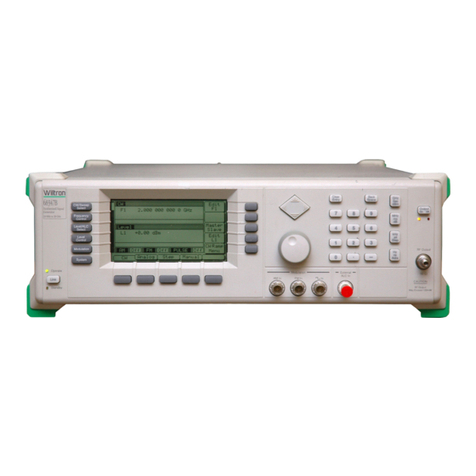
Wiltron
Wiltron 681XXB Series Operation manual
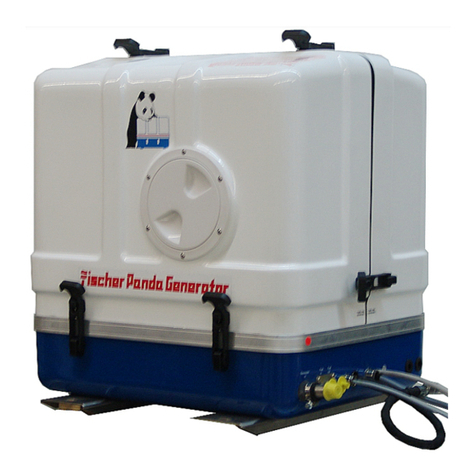
Fischer Panda
Fischer Panda 15000i PMS manual
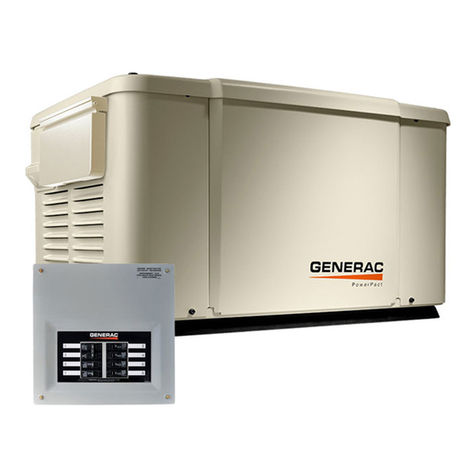
Generac Power Systems
Generac Power Systems PowerPact 7.5 kW Installation guidelines
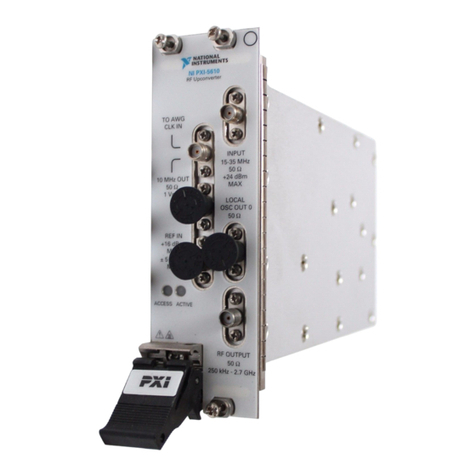
National Instruments
National Instruments NI 5650 Getting started guide

Champion
Champion 41537 Owner's manual & operating instructions

Broadcast
Broadcast BTS-101A instructions
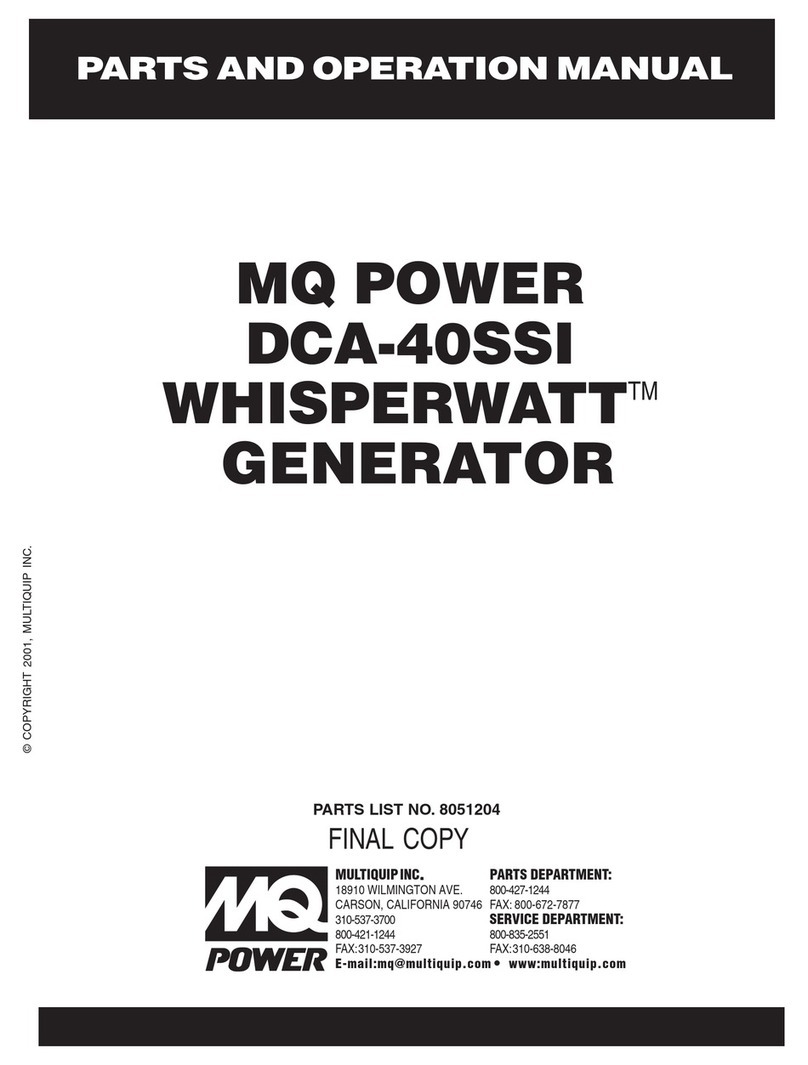
MULTIQUIP
MULTIQUIP Power WHISPERWATT DCA-40SSI Parts and operation manual
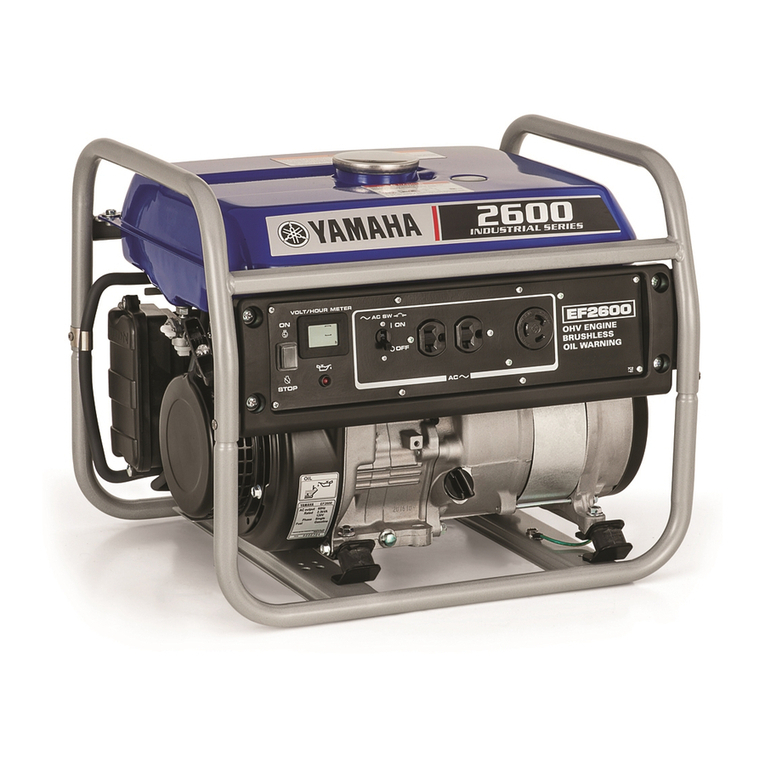
Yamaha
Yamaha EF1600, EF2600, YG2600 owner's manual

MULTIQUIP
MULTIQUIP GAC-6HZ Operation and parts manual
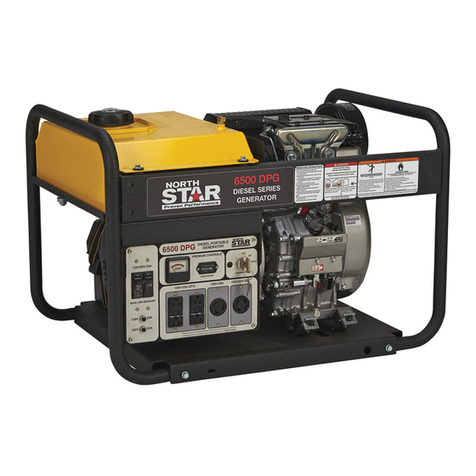
North Star
North Star 6500 DPG owner's manual
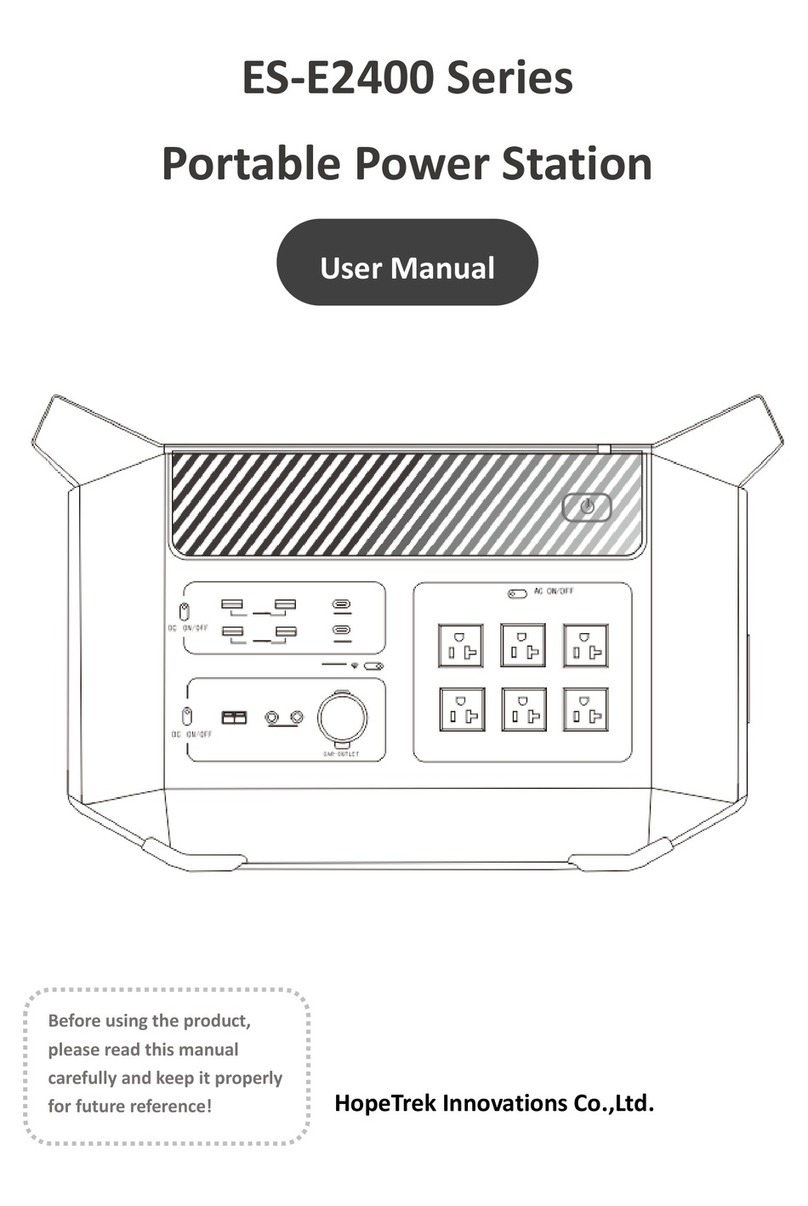
HopeTrek Innovations
HopeTrek Innovations ES-E2400 Series user manual
